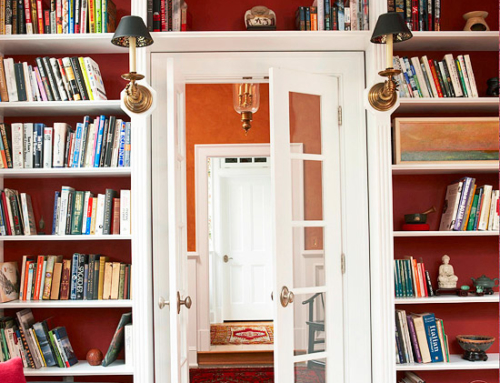As published in the TW magazine, September 2013 issue
Never have people so yearned for dream closets than in this age and time when we are space-starved and time-starved. In my journey as a Professional Organiser/Productivity Coach, I have met quite a number of clients who almost endlessly complain about the waste of time and stress their wardrobes cause them on a daily basis. Even more critical is the money-sucking phenomenon that comes with a disorganised wardrobe. Cannot seem to find that belt? Buy another one.
For socialites and career driven people who live on the go and have acquired lot of clothes and accessories, but who seem to keep having to look for what to wear, the answer is not always getting more clothes, the answer most times lies in getting a more organized wardrobe (a dream-closet). Your ability to open your wardrobe and get dressed quickly to meet an appointment is one necessary advantage in this world where everyone seems to be moving on the fast lane.
An organised (functional and friendly) wardrobe that compliments your lifestyle is what I mean by a dream-closet. A dream-closet is not a one-size-fits-all kind of closet; it is a person-specific closet that addresses an individual need.
Whether you have a large or miniature reach-in or walk-in type of closet, you can achieve a dream-closet with the knowledge of the basic principles and elements of a dream closet.
THE BASIC PRINCIPLES OF ACHIEVING A DREAM-CLOSET
These basic principles should be put into consideration as regularly as possible when dealing with a closet.
PURGING: Controlling clutter and excesses by taking out the unnecessary. This is the first principle of achieving a dream-closet.
Evaluate all of your clothing. Keep only those items which add value to your life right now.
- Make three piles when evaluating with my KTG plan
- 1) Keep Pile – Clothing you have used frequently (within the last 6 months) It perfectly matches an outfit that you have worn in the last year and the outfit fits you.
- 2)Toss Pile – Clothing you haven’t used it in over a year. Not in good enough shape to use or donate.
- 3) Give away Pile – It doesn’t serve you but it’s still valuable and can either be donated, traded-off or given to family/friends.
- Remember: when you live with less, you have more to give. Happy De-cluttering!
CATEGORISING: Grouping clothing for ease of identification.
Categorising with the use of labels, tags and colour-codes in a closet helps for easy location of items. Create different categories like work clothes, ceremonial clothes, evening dresses, sports wears, seasonal clothes, etc. also create sub-categories. You could create sub-categories under work clothes like shirts, pants, skirts, dresses, etc. and demarcate all the categories with tags or labels. Colour-coding is very beneficial, you can decide to colour-code your clothes or colour-code your systems. For example, you can colour-code your clothes by placing all your red shirts together or colour-code your systems by placing all your work shirts on a red hanger.
ARRANGING: Proper placement of possessions to allow for order and control. The arrangement of a closet should reflect a person’s daily lifestyle. Clothes used frequently should be kept within reach and seasonal items could be kept away.
MAINTENANCE: Regular checks to avoid relapses.
Maintaining order is very important. After organising your wardrobe, please don’t relapse to your old ways. Keep-up your new lifestyle. Whenever you are going to shop, use this organising rule “One in, one out”. If you buy a new shirt, make sure to take out one old one, give it away if it’s still valuable.
Sorting through clothing and personal belongings at least twice a year will help reduce clutter, keep up your closet organization and make finding any item much easier.
ELEMENTS OF A GOOD WARDROBE
Space – You need a wardrobe that offers a devoted space for EVERYTHING. Utilize the floor and wall space efficiently. Maximize your wardrobe space. Use-up sufficient wall space rather than floor space. Instead of leaving things on the floor of your room or wardrobe, raise the items you use less frequently up and place them towards the ceiling.
Structure – Does your wardrobe have a door, cabinets, shelves, drawers? These structures make organising your wardrobe easier and fun. Restructure your wardrobe. If your wardrobe has a one-tier hanging-rod, get a cabinet maker to fix in one or more hanging-rods. He can also include shelves and/or drawers. You can double your storage capacity even in the smallest of closets by adding two tiers of hanging rods instead of one. It’s a simple and inexpensive way to enhance your closet structure.
Systems– Storage systems like boxes, baskets. Organising systems like racks, hangers, etc are essential for maintaining order in a closet. The most common ones are hangers, but there are many more that can help you achieve an organized wardrobe. Closet accessories like the jewelry organizers, the scarf hangers, the under-wears/stocks organizers, tie-racks, baskets etc are space friendly and easy to use. Closet accessories help enhance the appearance of the wardrobe and allow for orderliness. Outside your wardrobe, install a hook or pull-out rod for hanging dry cleaning before putting away or to plan outfits for the next work day. This is a simple yet effective organizing move.
Shine– A good wardrobe should be luminous and properly lit. It makes seeing clothes easier and faster. If your closet is not lit, you can install some very simple lighting that will reflect on all the angles of your closet. Avoid dark closets because they can make dressing up very stressful.
Simplicity- The simpler your closet, the easier, getting dressed will be for you. Simplicity is very important when seeking order. Discard/donate clothes that don’t serve you anymore. Keep only the things you use and love!
Style: Your style is a reflection of who you are and what you do. Your profession, belief and responsibilities reflect your style. Your closet should simply define your style. A chef’s closet should not reflect a banker’s style.
Jesmine.
Featured Image Source: Houzz






Leave A Comment